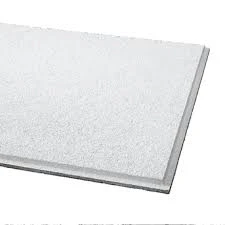- Afrikaans
- Albanian
- Amharic
- Arabic
- Armenian
- Azerbaijani
- Basque
- Belarusian
- Bengali
- Bosnian
- Bulgarian
- Catalan
- Cebuano
- Corsican
- Croatian
- Czech
- Danish
- Dutch
- English
- Esperanto
- Estonian
- French
- German
- Greek
- Hindi
- Indonesian
- irish
- Italian
- Japanese
- Korean
- Lao
- Malay
- Myanmar
- Norwegian
- Norwegian
- Polish
- Portuguese
- Romanian
- Russian
- Serbian
- Spanish
- Swedish
- Thai
- Turkish
- Ukrainian
- Uzbek
- Vietnamese
พ.ย. . 08, 2024 04:11 Back to list
ceiling tile attachment solutions for efficient installation and secure support options
Understanding Ceiling T-Bar Clips Essential Components for Your Ceiling Installation
In the world of construction and interior design, the ceiling is often one of the most overlooked elements. However, a well-installed ceiling can enhance the overall aesthetics of a space. One critical component in the installation of suspended ceilings is the ceiling T-bar clips. These seemingly minor accessories play a vital role in ensuring that the T-bar grid system is secure, stable, and visually appealing. This article delves into the importance, types, installation practices, and benefits of ceiling T-bar clips.
What are Ceiling T-Bar Clips?
Ceiling T-bar clips are small fastening devices used in the grid system of suspended ceilings. A suspended ceiling, also known as a drop ceiling, consists of a grid system made from T-shaped bars that hold ceiling tiles in place. The clips are designed to connect these T-bars to the building structure, ensuring that they remain in position and bear the weight of the ceiling tiles effectively.
Importance of Ceiling T-Bar Clips
The primary function of T-bar clips is to provide stability to the T-bar grid system. Without these clips, the grid could become loose or misaligned, leading to sagging tiles, gaps, or even potential collapse. This can not only compromise the aesthetic appeal of a space but also pose safety risks. The proper use of ceiling T-bar clips ensures that the ceiling remains taut, allowing for a level surface throughout.
Additionally, T-bar clips can help in sound insulation and energy efficiency. A well-secured ceiling aids in reducing sound transmission between floors and spaces, contributing to a quieter environment. Energy efficiency is also enhanced, as a well-installed ceiling can help in maintaining temperature and reducing energy costs.
Types of Ceiling T-Bar Clips
There are various types of ceiling T-bar clips available on the market, each designed for specific use cases. The most common types include
1. Standard T-Bar Clips These are the most widely used clips, primarily made from metal, and provide a secure fastening option.
2. Push-In Clips These clips are designed for quick installation. They can simply be pushed into place without the need for additional tools, making them ideal for fast-paced projects.
4. Adjustable Clips These clips allow for minor adjustments during installation, ensuring the perfect fit for uneven surfaces or specific design requirements.
ceiling t bar clips

Installation Practices
Installing ceiling T-bar clips does not require specialized skills, although some familiarity with ceiling systems is beneficial. Here are some best practices for a successful installation
1. Prepare the Space Ensure that the area is clean and free of dust and debris. Any existing fixtures or fittings should be noted so that they do not interfere with the installation.
2. Measure Accurately Take precise measurements of the ceiling area to determine where the T-bars and clips will be installed. This will ensure a level and aesthetically pleasing ceiling.
3. Secure T-Bars Before attaching the clips, lay out the T-bars according to the planned grid. Use the appropriate clips for each section to ensure stability.
4. Check Alignment Once the clips are installed, check the alignment of the T-bars. Adjust as necessary to maintain a level ceiling.
5. Install Ceiling Tiles After securing the T-bar clips and T-bars, you can begin to install the ceiling tiles. Make sure to follow the manufacturer's recommendations for tile placement.
Benefits of Using Ceiling T-Bar Clips
Utilizing ceiling T-bar clips offers several advantages
- Enhanced Structural Integrity Clips help maintain the strength of the ceiling grid, preventing sagging and ensuring a long-lasting installation. - Ease of Installation Many clips are designed for simple installation, saving time and labor costs on projects. - Versatility Available in various types, T-bar clips can accommodate different ceiling styles and weights, making them suitable for diverse applications. - Improved Aesthetics A well-installed ceiling enhances the overall look of the room, positively affecting the ambiance and functionality of the space.
Conclusion
Ceiling T-bar clips may seem like minor components in ceiling installation, but their role is critical in ensuring stability, safety, and aesthetics. By choosing the right type of clips and following best practices for installation, you can achieve a professional and durable ceiling that meets both design and functional requirements. So, the next time you consider a suspended ceiling installation, remember that the success of your project may hinge on these small but mighty elements!
-
Transform Interiors with PVC Gypsum Ceiling: A Stylish, Durable, and Moisture-Resistant SolutionNewsMay.19,2025
-
The Smart Interior Upgrade: Discover the Durability and Versatility of Gypsum Ceiling Access Panel SolutionsNewsMay.19,2025
-
The Smart Choice for Interior Design: Discover the Value of PVC Gypsum Ceiling SolutionsNewsMay.19,2025
-
Mineral Fiber Ceiling Tiles: The Smart Blend of Performance and AestheticsNewsMay.19,2025
-
Mineral Fiber Ceiling Tiles: The Superior Choice Over Gypsum for Sound and Fire SafetyNewsMay.19,2025
-
Mineral Fiber Ceiling Tiles: Eco-Friendly Strength and Style for Every CeilingNewsMay.19,2025







